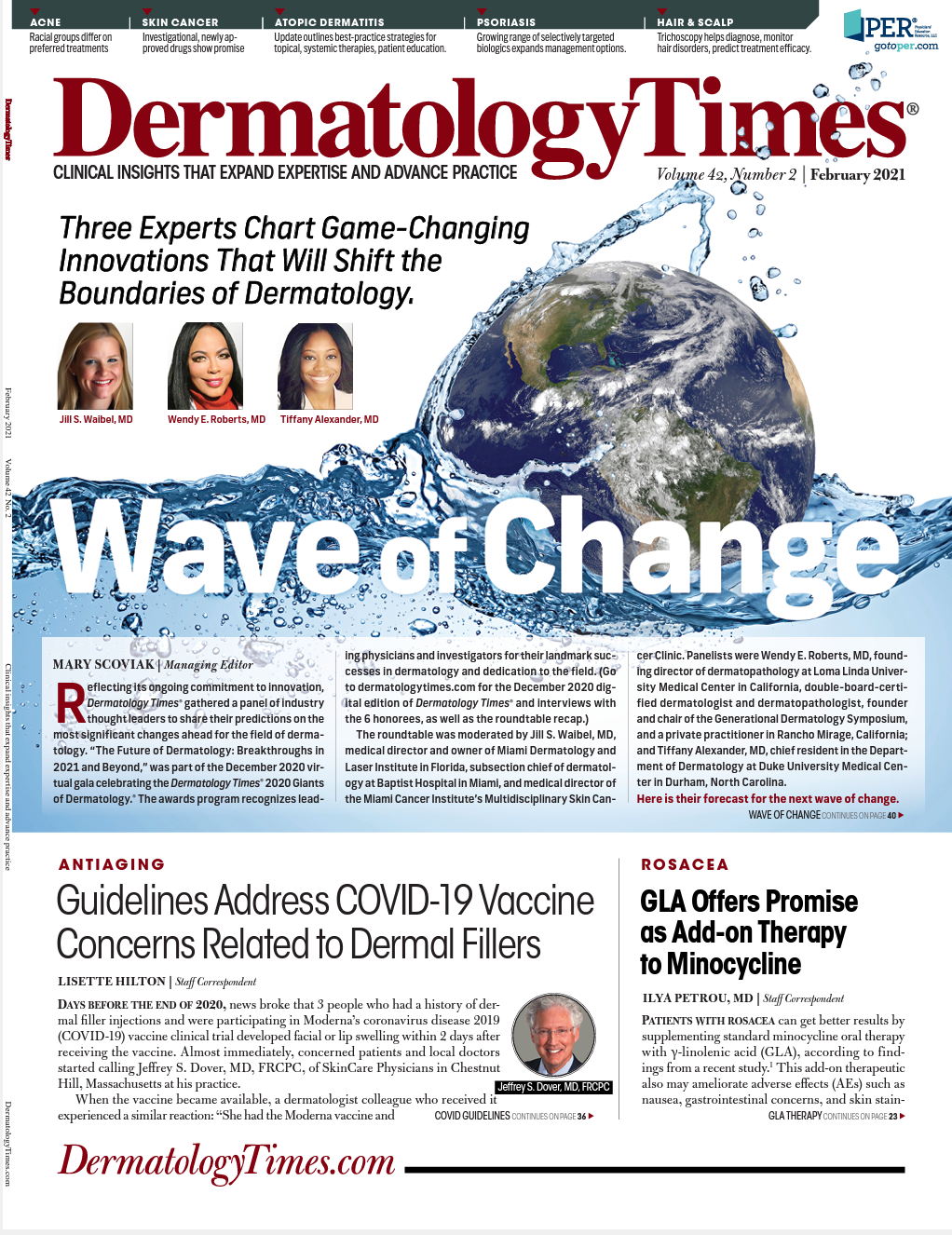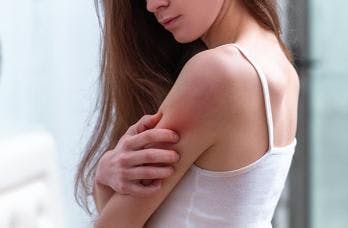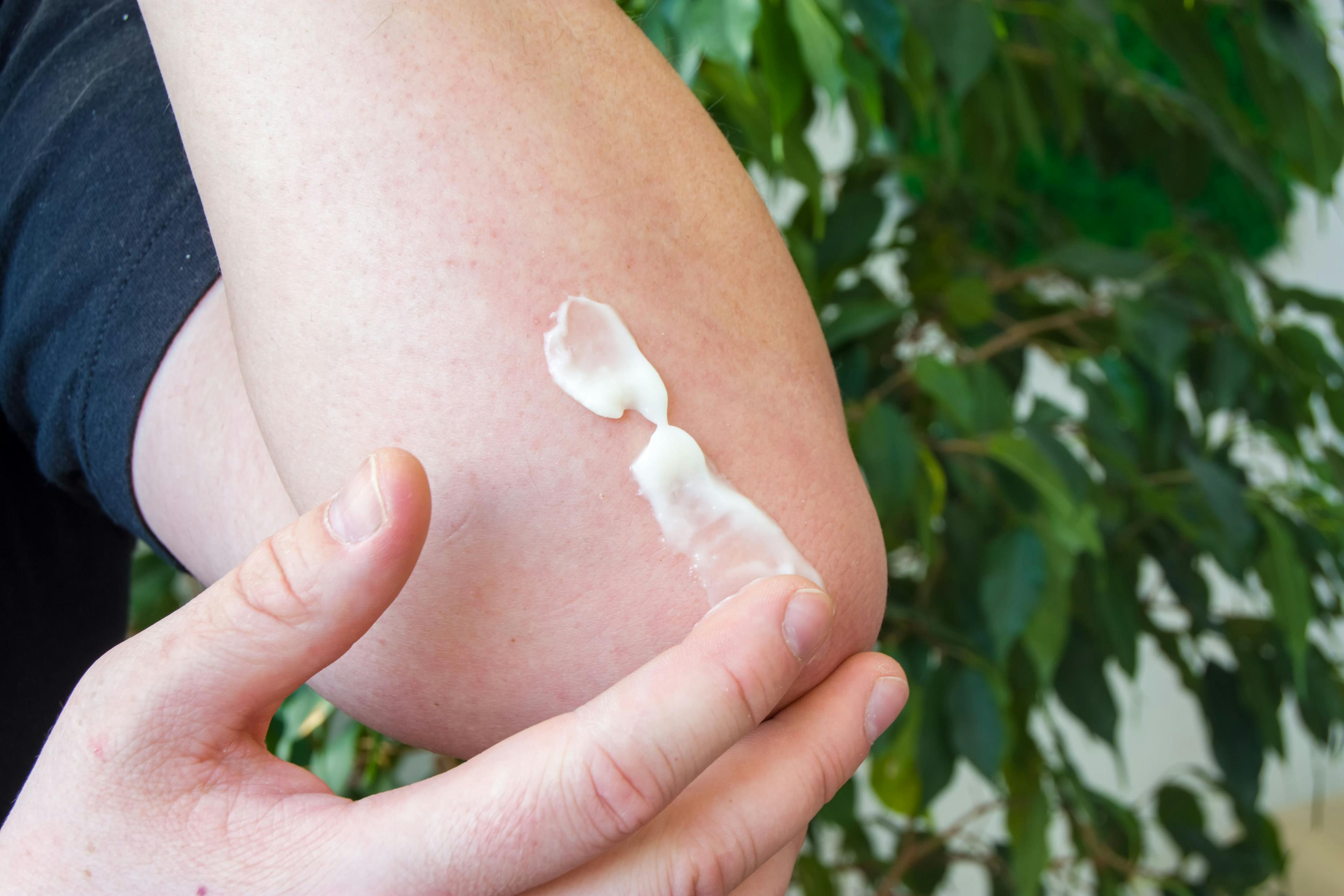- Acne
- Actinic Keratosis
- Aesthetics
- Alopecia
- Atopic Dermatitis
- Buy-and-Bill
- COVID-19
- Case-Based Roundtable
- Chronic Hand Eczema
- Chronic Spontaneous Urticaria
- Drug Watch
- Eczema
- General Dermatology
- Hidradenitis Suppurativa
- Melasma
- NP and PA
- Pediatric Dermatology
- Pigmentary Disorders
- Practice Management
- Precision Medicine and Biologics
- Prurigo Nodularis
- Psoriasis
- Psoriatic Arthritis
- Rare Disease
- Rosacea
- Skin Cancer
- Vitiligo
- Wound Care
Publication
Article
Dermatology Times
Trichoscopy Aids Diagnosis, Prognosis
Author(s):
According to one expert at the 29th European Academy of Dermatology and Venereology Virtual Congress, trichoscopy (a dermoscopy-based diagnostic method) not only helps diagnose hair disorders and monitor treatment but also predicts treatment efficacy.
Trichoscopy (a dermoscopy-based diagnostic method) not only helps diagnose hair disorders and monitor treatment but also predicts treatment efficacy, Anna Waśkiel-Burnat, MD, PhD, a dermatologist at Medical University of Warsaw in Poland, said at the 29th European Academy of Dermatology and Venereology Virtual Congress.
“There are numerous hair and scalp diseases that share similar clinical features,” Waśkiel-Burnat said in her presentation. “Trichoscopy is an easy-to-perform diagnostic method that may help identify subtle details and establish the correct diagnosis. For example, it is difficult to distinguish between female androgenetic alopecia [FAGA] and fibrosing alopecia in a pattern distribution [FAPD] based only on the clinical picture. In these conditions, trichoscopy is useful to avoid misdiagnosis.”1
Features of FAGA include increased numbers of vellus hairs and single-hair follicular units, along with anisotrichosis and yellow dots. For a diagnosis of FAGA, patients must meet 2 of the following major criteria2:
- More than 4 yellow dots in 4 images at 70-fold magnification in the frontal area
- Lower average hair thickness in the frontal area compared with the occiput (calculated from at least 50 hairs from each area).
- More than 10% thin hairs (< 0.03 mm) in the frontal area
Alternatively, dermatologists can establish a diagnosis of FAGA using 1 major criterion and 2 of the following minor criteria (all comparing frontal area with occiput):
- 2:1 ratio of single-hair unit percentage
- 1.5:1 ratio of number of vellus hairs
- 3.1 ratio of hair follicles with perifollicular discoloration
“Another condition that is difficult to diagnose, even with trichoscopy, is alopecia areata [AA] incognita,” Waśkiel-Burnat said. Because this entity is frequently misdiagnosed as telogen effluvium, histopathological examination is important, she said.
Because it is challenging to identify patients with AA who are at risk of rapid disease progression and to determine which patients are likely to respond well to immunosuppressive therapy, Waśkiel-Burnat and colleagues developed the Alopecia Areata Predictive Score.3
In a study of 65 patients with patchy AA, the authors conducted trichoscopic examinations at baseline and 2 months after treatment initiation. After 6 months of treatment, investigators classified 27 patients as responders and 38 as nonresponders. Positive predictive trichoscopic factors (observed in control trichoscopy) for hair regrowth in patchy AA included upright regrowing hairs and pigtail hairs.4 Negative predictive markers for hair regrowth included black dots, broken hairs, exclamation mark hairs, and tapered hairs. Probability of regrowth ranged from 98.3% for patients with the highest AA predictive score to 0% for patients with the lowest score.
For alopecia totalis or alopecia universalis, Waśkiel-Burnat said, she recommends trichoscopic examination 6 weeks after starting treatment and clinical assessment of hair regrowth after 4 months’ treatment. Positive predictive factors (observed in control trichoscopy) for regrowth in patients include pigmented vellus hairs and pigmented upright regrowing hairs. No negative predictive markers are associated with these conditions, she added.
Findings in a recent analysis showed lichen planopilaris accounted for 7.6% of visits to 22 specialist hair clinics.5 This condition is characterized by perifollicular scaling and erythema, as well as white dots and milky red and white areas on the scalp.
Trichoscopy can be performed with or without immersion fluid (wet vs dry trichoscopy). “It is important to start the trichoscopy examination using the dry method, as it allows one to better visualize scaling and features of blond and gray hairs,” Waśkiel-Burnat said. She suggests performing trichoscopy after hair dyeing for light tones since dark hair is more easily.
“In the future, I believe that trichoscopy will focus on general medicine and its usefulness in diagnosis of nondermatological conditions such as connective tissue disorders and hematological diseases,” she said.
Disclosures:
Waśkiel-Burnatreports no relevant disclosures or financial interests.
References:
1. Waśkiel-Burnat A. Trichoscopy in hair. 29th European Academy of Dermatology and Venereology Virtual Congress; October 29-31, 2020.
2. Rakowska A, Slowinska M, Kowalska-Oledzka E, Olszewska M, Rudnicka L. Dermoscopy in female androgenic alopecia: method standardization and diagnostic criteria. Int J Trichology. 2009;1(2):123-130. doi:10.4103/0974-7753.58555
3. Waśkiel-Burnat A, Rakowska A, Kurzeja M, et al. The value of dermoscopy in diagnosing eyebrow loss in patients with alopecia areata and frontal fibrosing alopecia. J Eur Acad Dermatol Venereol. 2019;33(1):213-219. doi:10.1111/jdv.15279
4. Waśkiel-Burnat A, Rakowska A, Sikora M, Olszewska M, Rudnicka L. Alopecia areata predictive score: a new trichoscopy-based tool to predict treatment outcome in patients with patchy alopecia areata. J Cosmet Dermatol. 2020;19(3):746-751. doi:10.1111/jocd.13064
5. Vañó-Galván S, Saceda-Corralo D, Blume-Peytavi U, et al. Frequency of the types of alopecia at twenty-two specialist hair clinics: a multicenter study. Skin Appendage Disord. 2019;5(5):309-315. doi:10.1159/000496708

Newsletter
Like what you’re reading? Subscribe to Dermatology Times for weekly updates on therapies, innovations, and real-world practice tips.





























